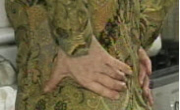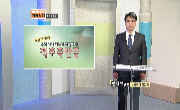이 연구의 목적은 척추 자기공명영상 검사 시, 검사시간을 단축할 수 있는 기법인 SENSE와 CS-SENSE를 경추, 흉추, 요추 검사 시 어떤 기법을 적용하는 것이 효과적인지 알아보기 위함이다. 본 연...
http://chineseinput.net/에서 pinyin(병음)방식으로 중국어를 변환할 수 있습니다.
변환된 중국어를 복사하여 사용하시면 됩니다.
- 中文 을 입력하시려면 zhongwen을 입력하시고 space를누르시면됩니다.
- 北京 을 입력하시려면 beijing을 입력하시고 space를 누르시면 됩니다.

자기공명영상 척추 검사 시 부위에 따른 SENSE 와 CS-SENSE 의 선택적 사용의 필요성 = The Need for Selective Use of SENSE and CS-SENSE Based on MRI Spine Examination Site
한글로보기https://www.riss.kr/link?id=A109269057
- 저자
- 발행기관
- 학술지명
- 권호사항
-
발행연도
2024
-
작성언어
Korean
- 주제어
-
등재정보
KCI등재
-
자료형태
학술저널
-
수록면
11-21(11쪽)
- 제공처
-
0
상세조회 -
0
다운로드
부가정보
국문 초록 (Abstract)
이 연구의 목적은 척추 자기공명영상 검사 시, 검사시간을 단축할 수 있는 기법인 SENSE와 CS-SENSE를 경추, 흉추, 요추 검사 시 어떤 기법을 적용하는 것이 효과적인지 알아보기 위함이다. 본 연구는 2022년 10월부터 2023년 3월까지 척추질환 및 의심 환자 102명을 대상으로 분석하였다. 사용된 장비는 필립스 사의 3.0T Ingenia Elition X와 20채널 두경부 코일과 44 채널 척추 코일을 사용하였다. 본 연구는 축상 T2강조 고속스핀에코를 SENSE와 CS-SENSE factor 1.5, 2, 3으로 각각 영상을 획득하고, 정량평가는 신호대잡음비와 대조대잡음비를 각 factor 별로 대응 표본 t-test를 진행하였고, 정성평가는 2명의 평가자의 평가점수를 Kruskal-wallis test로 비교하였다. 정량평가 결과, SENSE보다 CS-SENSE가 신호대잡음비와 대조대잡음비가 높게 나왔다. 정성평가 결과, 경추, 요추는 CS-SENSE 사용 시 평가점수가 높게 나왔고, 흉추는 SENSE 사용 시 평가점수가 높게 나왔다. 결론적으로 척추 MRI 검사 시, 경추, 요추는 CS-SENSE를, 흉추는 SENSE를 사용하는 것이 효과적이다.
다국어 초록 (Multilingual Abstract)
The purpose of this study was to determine the effectiveness of applying Sensitivity Encoding (SENSE) and Compressed Sensing-SENSE(CS-SENSE) a technique that can reduce examination time during spinal magnetic resonance imaging (MRI) examinations—in ...
The purpose of this study was to determine the effectiveness of applying Sensitivity Encoding (SENSE) and Compressed Sensing-SENSE(CS-SENSE) a technique that can reduce examination time during spinal magnetic resonance imaging (MRI) examinations—in cervical, thoracic, and lumbar spine MRI. An analysis was conducted of 102 patients with known and suspected spinal diseases between October 2022 and March 2023. The equipment used was a 3.0T Ingenia Elition X from Philips with a 20-channel head, neck, and spine coil and a 44-channel total spine coil. Axial T2W Turbo spin echo images were acquired using SENSE and CS-SENSE factors 1.5, 2, and 3. For quantitative evaluation, signal-to-noise ratio (SNR) and contrast-to-noise ratio (CNR) were compared byperforming a paired sample t-test for each factor, while for qualitative evaluation, a Kruskal-Wallis test was conducted to compare the scores of two evaluators. The quantitative evaluation revealed that CS-SENSE had higher SNR and CNR than SENSE. The qualitative evaluation indicated that cervical and lumbar spine scores were higher with CS-SENSE, while thoracic spine scores were higher with SENSE. In conclusion, using CS-SENSE for the cervical and lumbar spine and SENSE for the thoracic spine is effective when performing spine MRI examinations.
동일학술지(권/호) 다른 논문
-
딥러닝 프로세스가 적용된 T2-PROPELLER 와 T2-FSE 의 화질 평가: 모션 ACR 팬텀을 활용하여
- 대한자기공명기술학회
- 박현진
- 2024
- KCI등재
-
딥러닝 자유호흡기법의 간 확산강조영상에서 b-value 별 여기횟수에 따른 겉보기확산계수 지도의 정확도 분석
- 대한자기공명기술학회
- 김도희
- 2024
- KCI등재




 코리아스칼라
코리아스칼라






